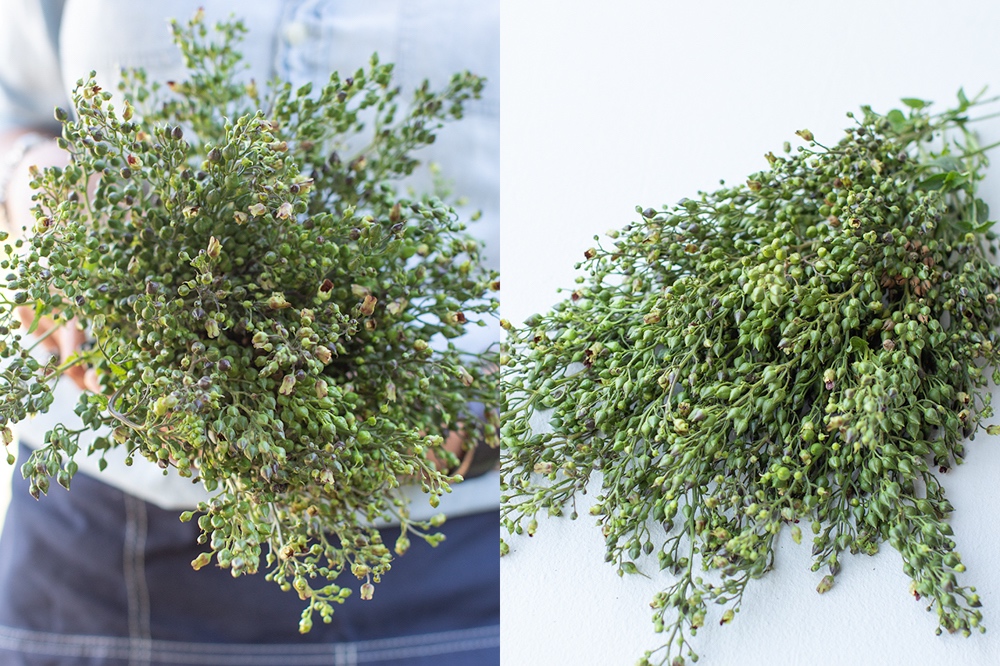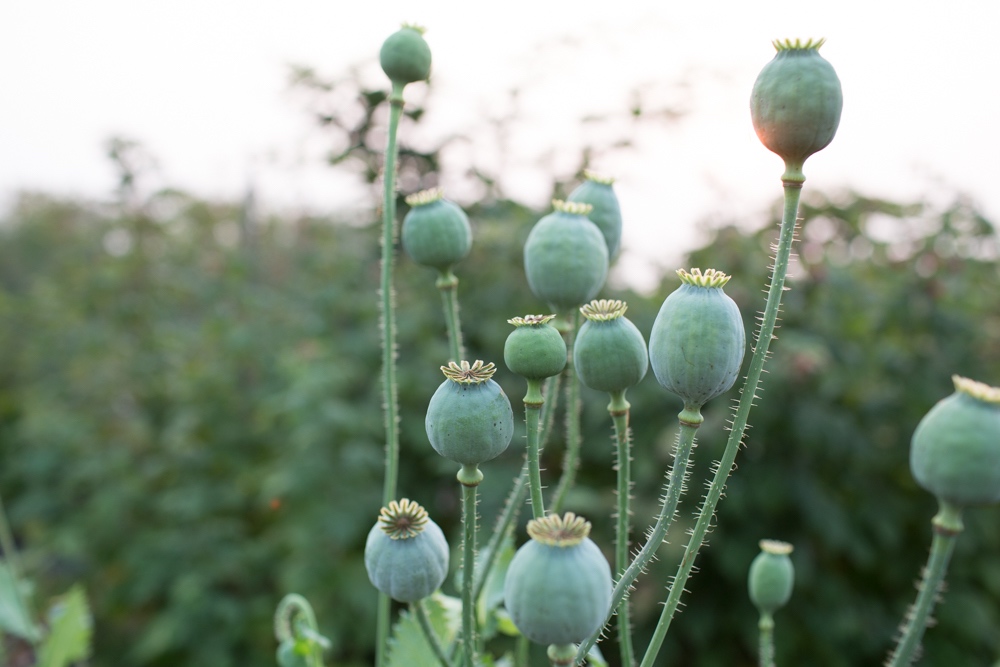Grasses, Grains, and Pods
While I love growing lush, romantic blooms, there’s also something very satisfying about cultivating weedier, wilder bouquet ingredients. These unique textural elements add interest and depth to any arrangement with their rustic appeal, and they produce an abundance of cutting material from plant delivery vancouver
In addition, many of these materials can be dried and used in fall wreaths and arrangements, making them doubly valuable in the cutting garden.
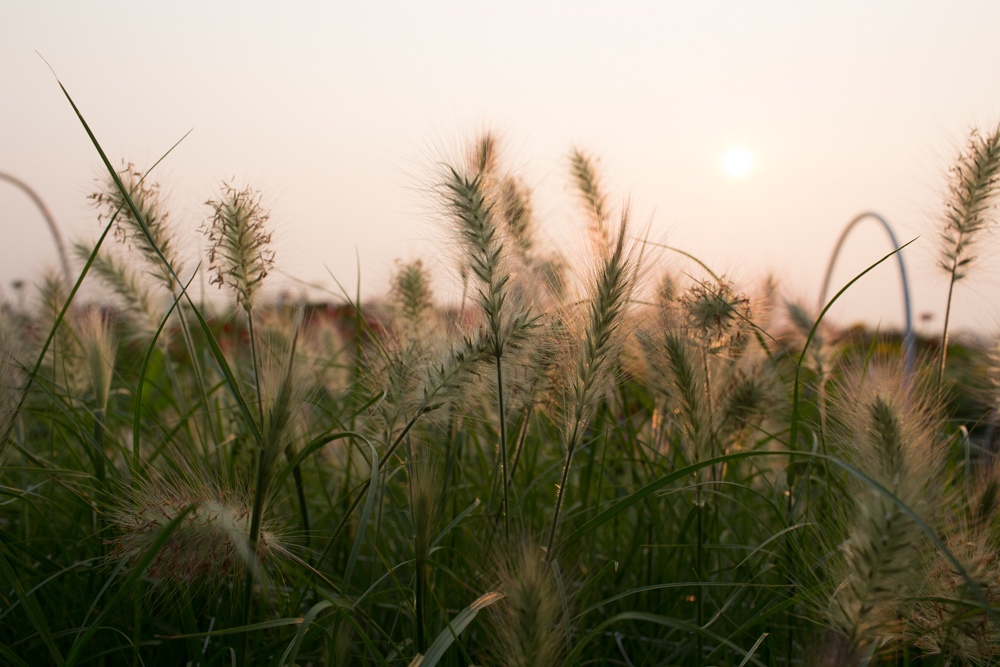 GRASSES
GRASSES
One of the fastest and easiest ways to add unexpected magic to an arrangement is to tuck a few stems of ornamental grasses into the mix. In addition to bringing unique visual interest to bouquets, these grasses are drought-tolerant and easy to grow, and they bloom for months from just one planting. ‘Feathertop’ (pictured above) has been a mainstay in my cutting garden for many years. One planting will flower for nearly 3 months, and the more you cut, the more it produces.
The creamy white, fluffy seed heads look like they are dancing in the vase and are beautiful when combined with chrysanthemums and dahlias. Seed heads will last for 7 to 10 days as fresh cuts; no floral preservative is needed.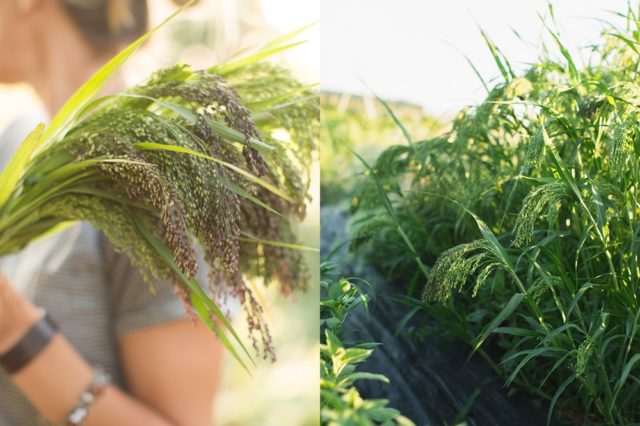 Broomcorn Millet Purple Seeded (pictured above): This unique grass is one of my all-time favorites to grow and cut. The deep green and black-tipped seed heads arch over from strong stems, resembling miniature, drooping broomcorn. Their elegantly draped, tassel-like blooms look amazing in late summer and autumn bouquets, producing abundantly for many weeks from one planting.
Broomcorn Millet Purple Seeded (pictured above): This unique grass is one of my all-time favorites to grow and cut. The deep green and black-tipped seed heads arch over from strong stems, resembling miniature, drooping broomcorn. Their elegantly draped, tassel-like blooms look amazing in late summer and autumn bouquets, producing abundantly for many weeks from one planting.
Seed heads can be harvested at almost any stage, from barely emerging to fully elongated. As stems ripen, they become longer and more deeply colored. Stems last for 7 to 10 days in the vase; no preservative is needed.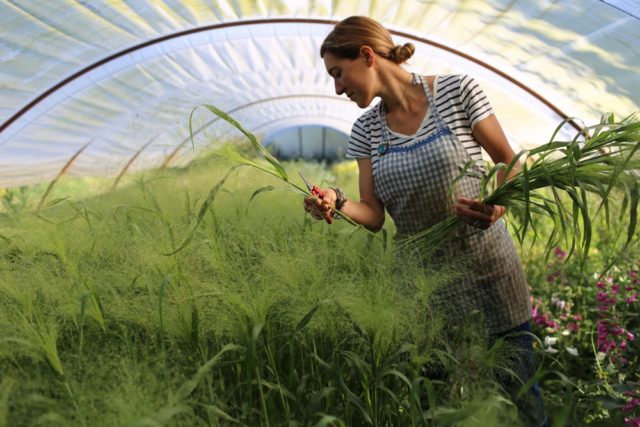 ‘Frosted Explosion’ (pictured above) is one of the most productive and profitable cuts I’ve ever grown. This grass cranks out buckets of stems every few days for a solid 6 weeks from just one planting.
‘Frosted Explosion’ (pictured above) is one of the most productive and profitable cuts I’ve ever grown. This grass cranks out buckets of stems every few days for a solid 6 weeks from just one planting.
The tall, stiff green stems are topped with glittering silvery seed heads resembling the fiber optic wands that were so popular during my childhood.
Seed heads can be harvested at almost any stage, from barely emerging to fully blown open. The more mature the stem, the larger the explosion grows. Stems last 10 to 14 days in the vase.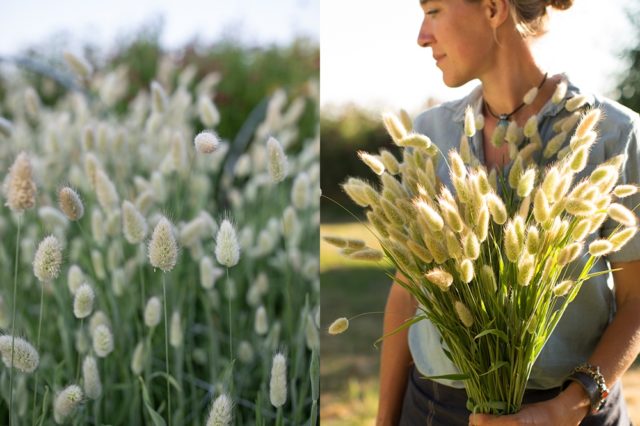 ‘Bunny Tails’ (pictured above): You won’t be able to keep your hands off this irresistible ornamental grass that’s as soft as a well-worn baby’s blanket. Compact plants produce graceful gray-green blades with elongated heads that turn a delicate cream color and soften as they age.
‘Bunny Tails’ (pictured above): You won’t be able to keep your hands off this irresistible ornamental grass that’s as soft as a well-worn baby’s blanket. Compact plants produce graceful gray-green blades with elongated heads that turn a delicate cream color and soften as they age.
Everyone who visits the farm loves this grass! It mixes well with everything and looks fantastic dried. Fluffy wands catch slightly in the breeze; plant en masse for a real show.
Harvest at any point once seed heads emerge. Expect a vase life of 7 days; no preservative needed. To dry, wait until the pollen sheds, pick and hang upside down in a warm, dark place.
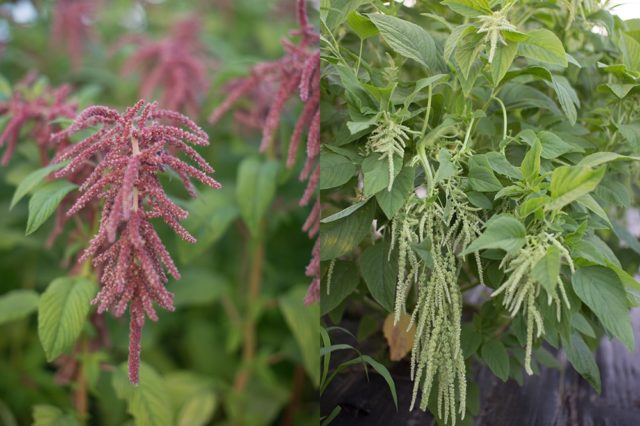 GRAINS
GRAINS
Amaranth: I have grown just about every variety of amaranth on the market, but I’ve found only a handful to be worthy of planting en masse every year. Some varieties of this plant are upright and full; others produce dramatic hanging tassels that are showstoppers in vase arrangements and wedding work.
Amaranth is easy to grow and a great choice for beginning gardeners. Seed can be started indoors to produce transplants or direct sown in the garden. Harvest when the tassels begin to elongate, and remove most of the foliage so the colorful ropes are more visible.
‘Green Tails’ (pictured above, right) is an extra-special amaranth that provides a striking backdrop to a garden bed or a dramatic addition to large-scale arrangements. Its long, chartreuse green tassels add texture and combine beautifully with both bright and pastel color palettes.
I discovered ‘Coral Fountain’ (pictured above, left) during a variety trial some years back and fell madly in love with it. The pendulous blooms are the most exquisite shade of dusty pink that resembles sun-faded velvet. It is perfect for dramatic, large-scale arrangements.
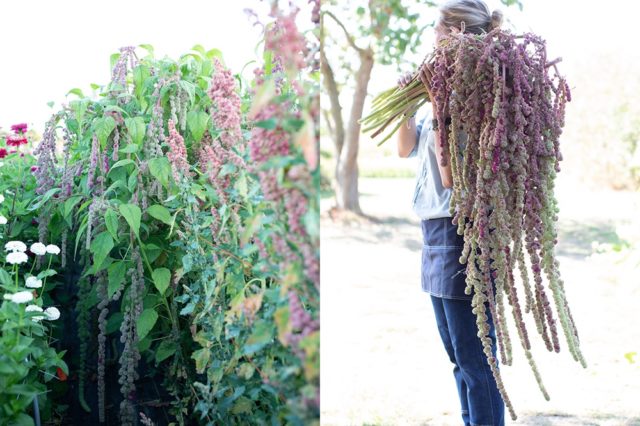 ‘Mira’ (pictured above) is an unusually formed amaranth variety with bicolored green and rose-tinted rope-like blooms that add stunning texture to bouquets. Long, thick, pendulous tassels resemble cascading dreadlocks, perfect for dramatic arrangements.
‘Mira’ (pictured above) is an unusually formed amaranth variety with bicolored green and rose-tinted rope-like blooms that add stunning texture to bouquets. Long, thick, pendulous tassels resemble cascading dreadlocks, perfect for dramatic arrangements.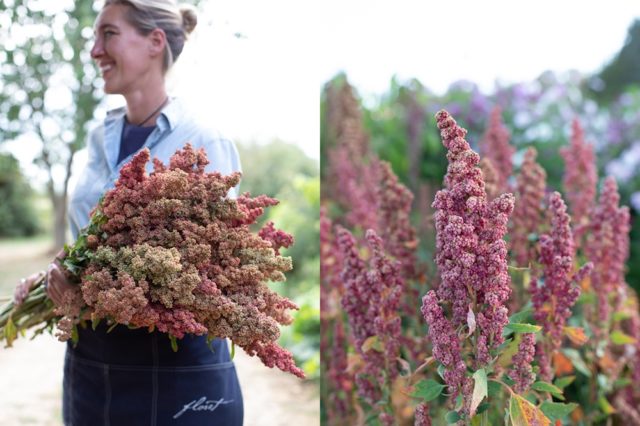 Quinoa is one of our new favorite bouquet fillers. ‘Redhead’ produces towering plants with a large stalk and multiple side branches covered in thickly seeded heads. As seed heads mature, they transition from lime green to smoky peach and eventually darken to magenta-cranberry.
Quinoa is one of our new favorite bouquet fillers. ‘Redhead’ produces towering plants with a large stalk and multiple side branches covered in thickly seeded heads. As seed heads mature, they transition from lime green to smoky peach and eventually darken to magenta-cranberry.
Plants can be harvested over a long period of time after seed heads have formed. Expect a vase life of 7 to 10 days.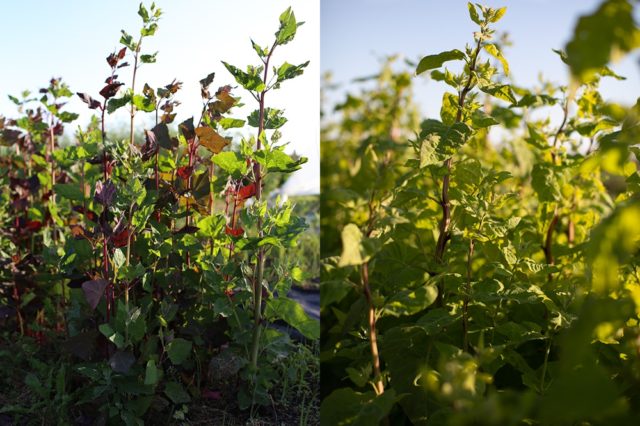 Orach is a fantastic plant I discovered in a friend’s veggie patch some years back, and I have been a huge fan ever since. The young leaves are edible and are often compared to spinach.
Orach is a fantastic plant I discovered in a friend’s veggie patch some years back, and I have been a huge fan ever since. The young leaves are edible and are often compared to spinach.
Early in the season, harvest the leafy stems en masse for bouquets. If plants are left to grow, you’ll be rewarded with gorgeous seedy stems that are wonderful in large midsummer arrangements.
Fresh stems used for their foliage last longest when you dip them for 7 to 10 seconds in boiling water directly after harvest; seeded stems do not need any special postharvest treatment. Both can last up to 2 weeks in the vase.
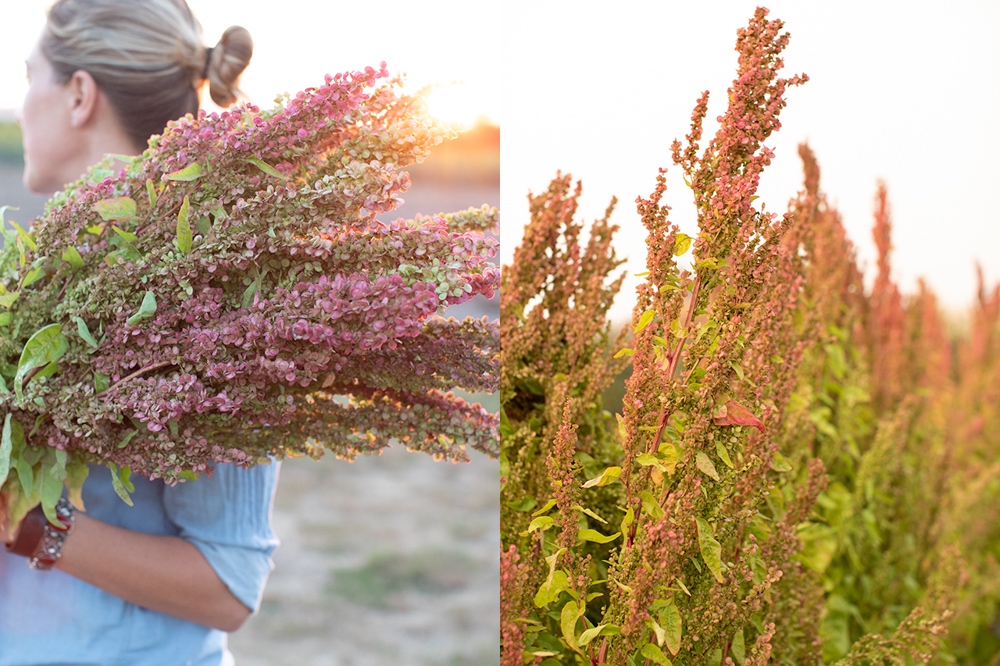 The Caramel Apple Mix includes brilliant Granny Smith green and rich chocolatey crimson. ‘Ruby Gold’ (pictured above) is an incredible variety shared with us by Frank Morton at Wild Garden Seed. Its eye-catching foliage is a glowing acid-green, and stalks are streaked with cranberry. Seeds are a blend of dusty rose and sunbleached moss.
The Caramel Apple Mix includes brilliant Granny Smith green and rich chocolatey crimson. ‘Ruby Gold’ (pictured above) is an incredible variety shared with us by Frank Morton at Wild Garden Seed. Its eye-catching foliage is a glowing acid-green, and stalks are streaked with cranberry. Seeds are a blend of dusty rose and sunbleached moss.
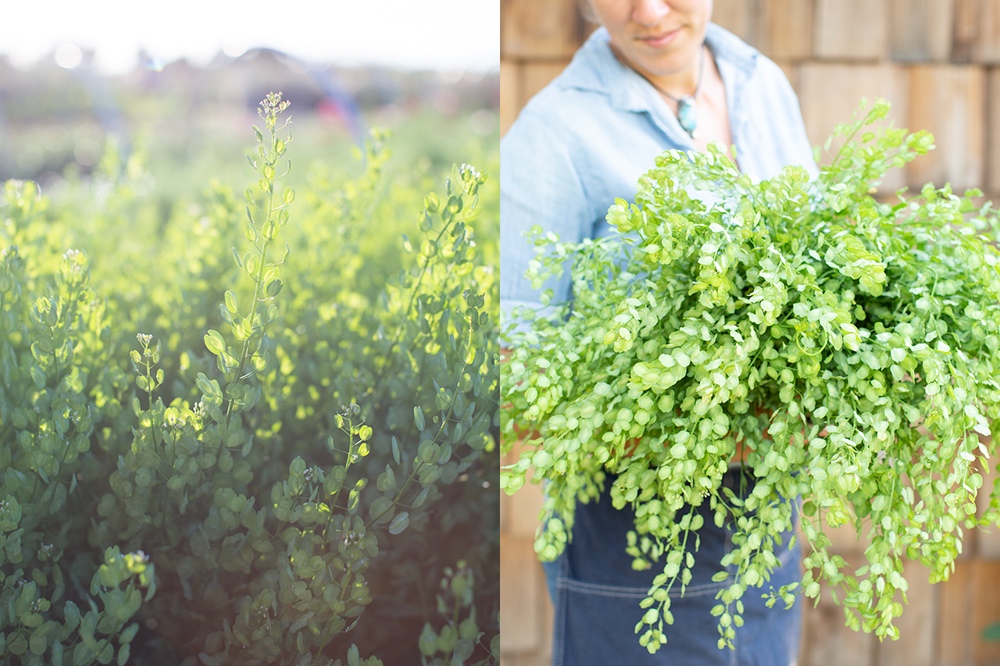 PODS
PODS
Cress: This fast-flowering filler is a must-have for mixed bouquets and intricate handiwork such as boutonnieres and flower crowns. The tall, sturdy stems are smothered in beautiful silvery seedpods—like tiny textural beads—that aren’t prone to wilting or shattering.
Producing a bumper crop just 2 months from sowing, this garden workhorse is a winner. Cress is extremely quick to germinate, so I direct seed it in the garden every 2 to 3 weeks from my last spring frost through early summer for a steady supply.
In addition to using cress in fresh bouquets, you can easily dry stems to use as a fantastic addition to autumn bouquets and wreaths. To dry, hang bunches upside down in a warm, dry place out of direct sunlight.
A friend gifted me seeds from her ‘Pennycress’ (pictured above). Legend has it that Pennycress has been growing in the Skagit Valley since the year I was born. The bright, clean, apple-green stems are well-branched and loaded with round, textural seedpods. As seed heads mature, they turn the color of wheat.
This is a staple crop for me, and I sow it multiple times over the season for a steady supply. Pods come on all at once, so it’s perfect for succession planting. Pennycress dries very well, changing from green to glowing yellow and eventually to tan. It’s very easy to save seed, too.
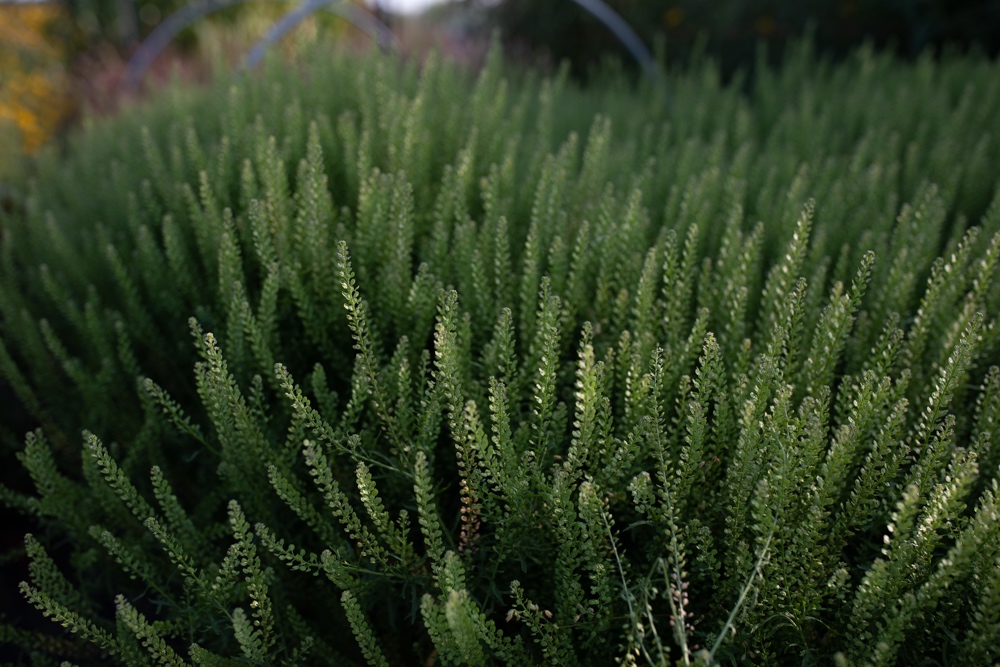 ‘Emerald Beads’ (pictured above), a new variety in 2020, is an extremely heavy producer with more delicate and more numerous pods than other varieties. The branched stems are upright with a graceful wave, making them useful and versatile in bouquets and arrangements.
‘Emerald Beads’ (pictured above), a new variety in 2020, is an extremely heavy producer with more delicate and more numerous pods than other varieties. The branched stems are upright with a graceful wave, making them useful and versatile in bouquets and arrangements.
Harvest when seed wands have fully formed to the tip. Expect a vase life of 10 days.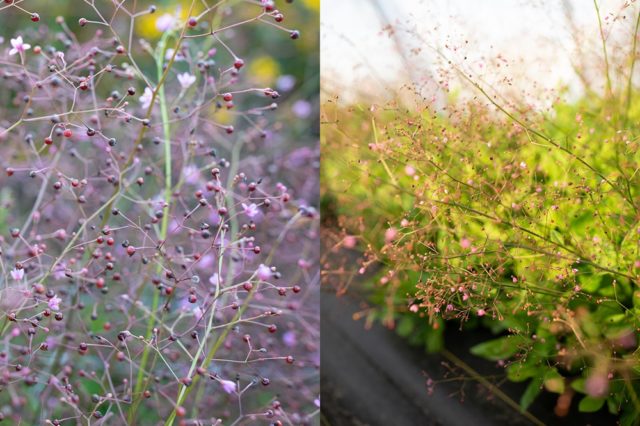 Jewels of Opar (pictured above), new for 2020, produces dense mounds of chartreuse foliage that give way to long, airy wands covered in tiny pink, star-shaped flowers that mature into miniature glowing red-orange beads. It’s an incredible plant in the late summer/early autumn garden and a must-grow for autumn bouquets and wearable flowers.
Jewels of Opar (pictured above), new for 2020, produces dense mounds of chartreuse foliage that give way to long, airy wands covered in tiny pink, star-shaped flowers that mature into miniature glowing red-orange beads. It’s an incredible plant in the late summer/early autumn garden and a must-grow for autumn bouquets and wearable flowers.
Harvest after flowers have dropped and seedpods appear. Expect a vase life of at least a week.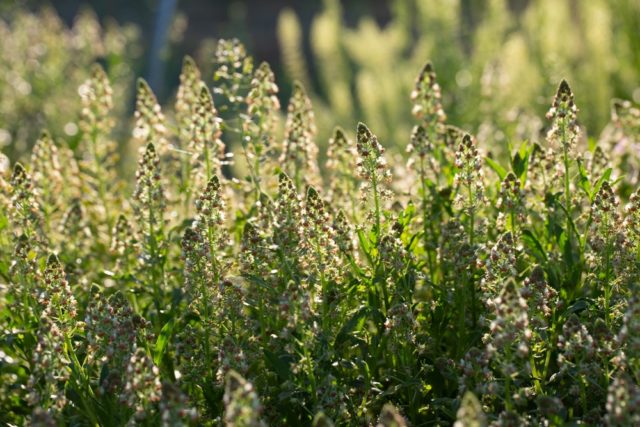 Mignonette, especially ‘Garden Mignonette’ (pictured above), is one of my newest favorite textural bouquet fillers. After the vanilla-scented flowers fade, they leave long, wispy wands of seedy stems that light up bouquets with their texture and persist in the garden until the first frost.
Mignonette, especially ‘Garden Mignonette’ (pictured above), is one of my newest favorite textural bouquet fillers. After the vanilla-scented flowers fade, they leave long, wispy wands of seedy stems that light up bouquets with their texture and persist in the garden until the first frost.
The little lantern-like pods also shift in color over time; as summer fades and fall arrives, they take on a cranberry dusting. Fresh pods will last 7 days. Mignonette is also a favorite of pollinators, making it suitable for the border as well as containers.
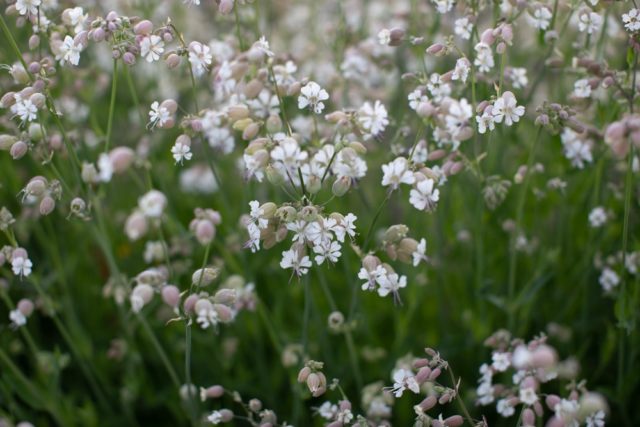 Two other gorgeous new 2020 introductions carry highly textural stems full of pod-like blooms that make bouquets sparkle.
Two other gorgeous new 2020 introductions carry highly textural stems full of pod-like blooms that make bouquets sparkle.
Silene: ‘Blushing Lanterns’ (pictured above) produces tall, wispy gray-green stems covered in miniature pale green balloon-like pods veined with blush. As pods mature, they open to reveal snow-white petals.
Once petals drop, pods remain. They make a romantic and feminine addition to arrangements and are a must-grow for wedding work.
This extremely productive variety blooms abundantly from early summer through autumn. Silene can be harvested at any stage, and cut stems last 7 to 10 days in the vase.
Figwort (pictured above): This hardworking perennial will flower the first year from seed if started early. Waist-high branching plants produce an abundance of long stems smothered in chocolate and green hood-like blooms, similar to those of snapdragons.
Leathery, long-lasting flowers have a bitter, smoky scent, but they attract more pollinators than any other pla
nt we’ve grown. In addition to being a great bouquet filler, figwort is a must-grow for the bees. Pick when stem tips are no longer floppy, and flowers will last up to 2 weeks in the vase.
Poppy pods are still a favorite in mixed bouquets. They are easy to grow and make a wonderful addition to any garden.
‘Rattle Poppy’ produces huge decorative seedpods that are as large as limes. The pods can be dried and used indefinitely. This variety and other breadseed poppies do best when direct sown, but slugs love them, so keep an eye out.
Shirley poppies yield a b
umper crop of miniature silver pods with darker tops that are excellent for handwork, bridal bouquets, and dried crafts. All varieties produce equally well.
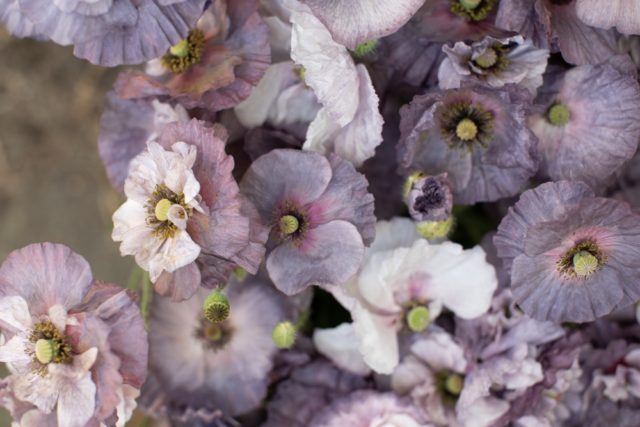 ‘Amazing Grey’ (pictured above) sends up petite flowers that are the most haunting purple-gray hue, similar in color to ‘Nimbus’ sweet peas. We’ve never seen anything like it. Plants are vigorous and free flowering, and after blooms drop, they leave behind adorable, chocolate-capped seed pods.
‘Amazing Grey’ (pictured above) sends up petite flowers that are the most haunting purple-gray hue, similar in color to ‘Nimbus’ sweet peas. We’ve never seen anything like it. Plants are vigorous and free flowering, and after blooms drop, they leave behind adorable, chocolate-capped seed pods.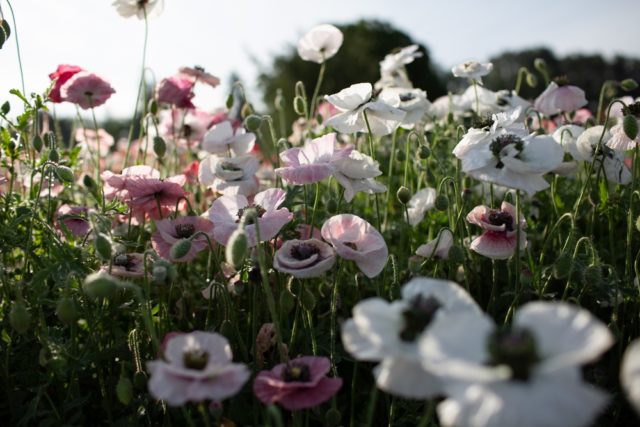 ‘Mother of Pearl’ (pictured above) comes in hues spanning dusty plum, cocoa-dusted white, cream with raspberry veining, and muddy eggplant. Long stems, refined flowers and adorable seedpods make this a perfect flower for wedding and wire work.
‘Mother of Pearl’ (pictured above) comes in hues spanning dusty plum, cocoa-dusted white, cream with raspberry veining, and muddy eggplant. Long stems, refined flowers and adorable seedpods make this a perfect flower for wedding and wire work.
‘Supreme’ flowers all summer. This mesmerizing mix of white, scarlet, soft pink, and watermelon-orange looks like an old-fashioned silk kimono. Single and double flowers sway above clean, mint-green serrated foliage. Each fuzzy stem shoots up at least a half dozen buds, and as soon as one flower fades, another comes up.
One of the most ephemeral and delicate flowers we grow, Shirley poppies steal the heart of everyone who visits our garden. Pollinators love them too.
Readmore: Favorite Sunflowers for Cutting
